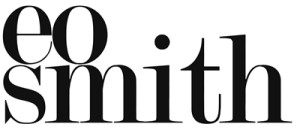 Smith, E.O., 2002. Biology and Culture in Collision. Rutgers University Press, Piscataway, New Jersey.
Smith, E.O., 2002. Biology and Culture in Collision. Rutgers University Press, Piscataway, New Jersey.
Why do we do things that we know are bad for us? Why do we line up to buy greasy fast food that is terrible for our bodies? Why do we take the potentially lethal risk of cosmetic surgery to have a smaller nose, bigger lips, or a less wrinkled face? Why do we risk life and limb in a fit of road rage to seek revenge against someone who merely cut us off in traffic? If these life choices are simply responses to cultural norms and pressures, then why did these particularly self-destructive patterns evolve in place of more sensible ones? In When Culture and Biology Collide, E. O. Smith explores behaviors that are endemic to contemporary Western society, and proposes new ways of understanding and addressing these problems. Our physiology and behavior are the products of thousands of generations of evolutionary history. Every day we play out behaviors that have been part of the human experience for a very long time, yet these behaviors are enacted in an arena that is far different from that in which they evolved. Smith argues that this discordance between behavior and environment sets up conditions in which there can be real conflict between our evolved psychological predispositions and the dictates of culture. Topics such as drug abuse, depression, beauty and self-image, obesity and dieting, stress and violence, ethnic diversity, and welfare are all used as sample case studies. In all of his case studies, Smith emphasizes the importance of not using an evolutionary explanation as an excuse for a particular pattern of behavior. Instead, he seeks to offer a perspective that will help us see ourselves more clearly and that may be useful in developing intelligent solutions to seemingly intractable problems. Smith provides ways of developing strategies for minimizing our self-destructive tendencies.
Reviews
The main theme of Smith’s fascinating book is the conflict between our evolutionary heritage and ourcurrent cultural environment.Each chapter discusses the con?ict between biology and culture with extensive background information on these problems, and offers potentialsolutions. Although I was not always convinced ofthe evolutionary explanations for the origins ofcertain traits or behaviors, Smith has done a masterful job of showing how past evolutionarychanges (regardless of specific origin) can back rein in a rapidly changing world. I very much enjoyed the level of detail provided within each chapter.The book is replete with dozens of interesting discussions relating to the basic background of the issues discussed, and I suspect that anyone who is similarly fascinated by such details will find the book an enjoyable as well as educational read. This background consists not merely of trivia (although I have always enjoyed trivia for its ownsake), but is nicely tied in with the main themes ofeach. Overall, this is an enjoyable book, which couldeasily be used in a variety of courses in generalanthropology and biological anthropology, evolutionary psychology, and others, and it is also a wellwritten book for a general audience. Although, I amtempted to use the book as a source for preparing classroom discussions in my course on “Humans in Evolutionary Perspective” (thus making me look clever and knowledgeable), I will most likely give credit where credit is due and assign the book forstudents to read.
John H. Relethford, Department of Anthropology, State University of New York College at Oneonta, Oneonta, New York, American Journal of Physical Anthropology, 126(2),2229-230, 2004
Chapters
- Intersection of Biology & Culture
- Road Rage, Stress, & Evolution
- Beauty, Blepharoplasty, Barbie, & Miss America
- Fat, Diet, & Evolution
- Depression, Antidepressants, & Evolution
- Welfare, Cooperation, Evolution
